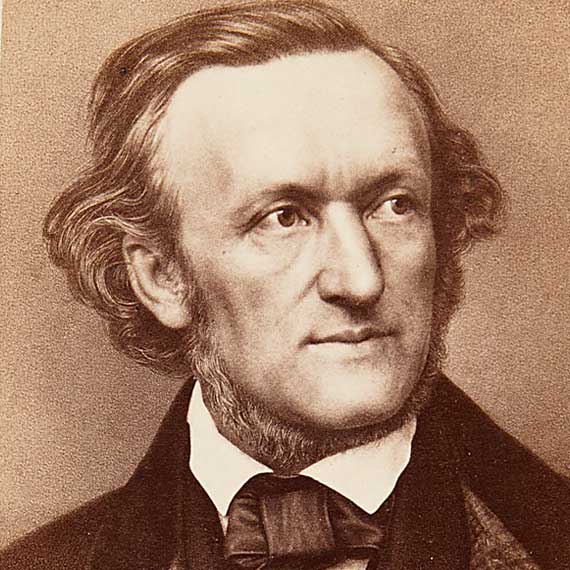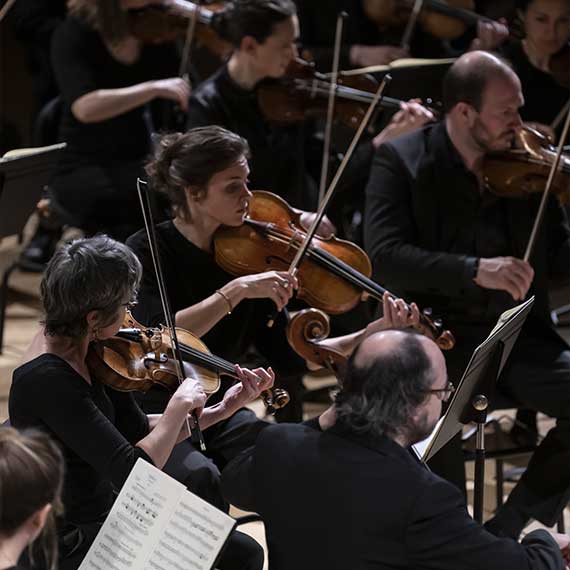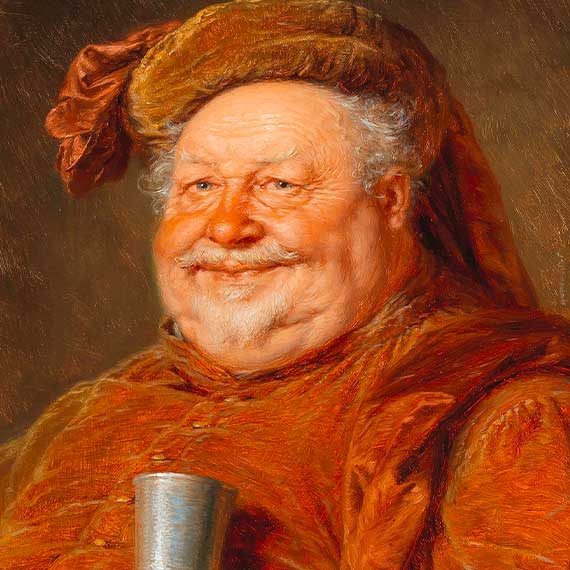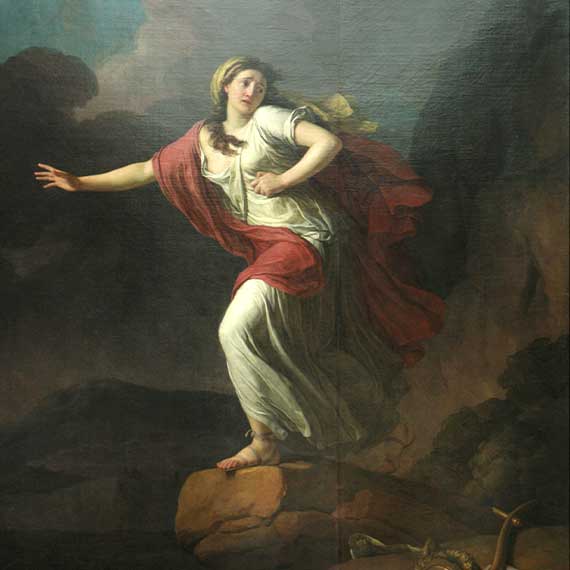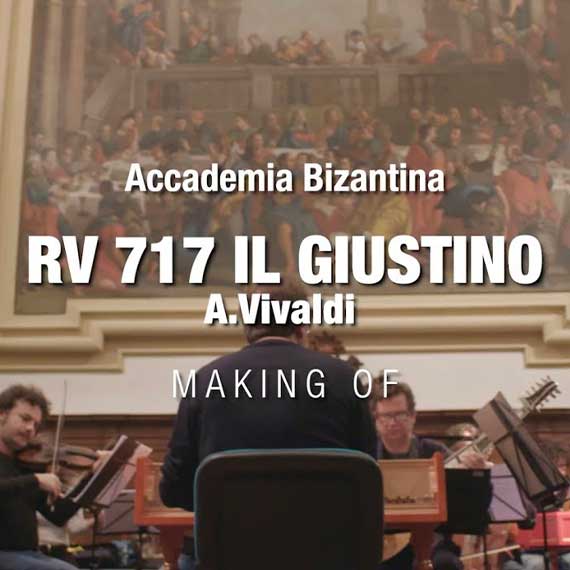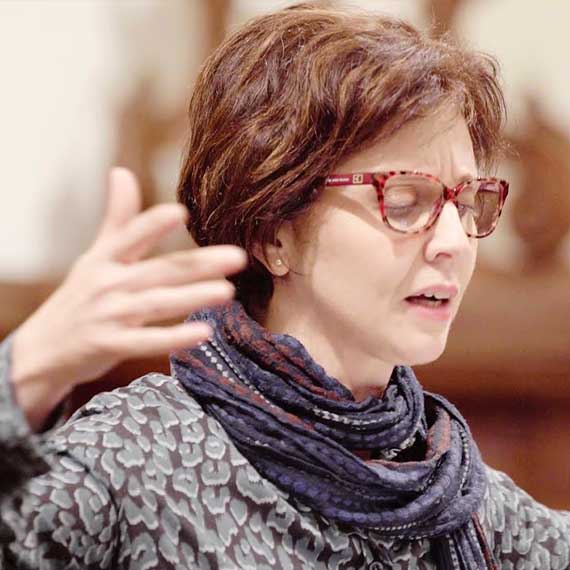Chapitres
Parsifal
Historical instruments
Richard Wagner
[Content available in german only]

Johannes Bosch

Richard Wagner - Theatermuseum Wien
For our Parsifal production on historical instruments, we have done a great deal of research on almost all the instruments in the orchestra in order to clarify which instruments were used in Wagner’s time and (if available) what Wagner said about them.
Flutes
Contributor
Johannes Bosch
This source is a small essay that brings together the most important information about the technical development of the flutes in the 19th century and Wagner’s sound-aesthetic ideas about the flutes. In summary, it can be said that Wagner rejected Boehm’s silver cylinder flute for reasons of sound aesthetics. The conical ring-keyed flute, which was certainly used in connection with the premiere of Parsifal, suited his sound ideal of the « delicately held » piano and the « tone-filled » sound.
More in-depth, recommendable literature on the subject of Richard Wagner and the flute can be found in this German-language article: Karpf, Roswitha Vera, « Gewaltsröhren » und « Kanonen » oder Richard Wagner und die Flöte, in: Wolfgang Suppan (ed.): Bläserklang und Blasinstrumente im Schaffen Richard Wagners. Konreßbericht Seggau 1983, Tutzing 1985, pp. 73-88
Oboe
Contributor
Minkus Teske
This essay deals with the oboe at the time of Parsifal. After a general overview of the history of the oboe and the different traditions in France, Germany and Viennese orchestras, the question is what instruments were used in Parsifal. It can be said with great certainty that instruments of German design were used in the first performance of Parsifal in 1882.
English Horn or Altoboe
Contributor
Minkus Teske
This essay deals with the English Horn or Altoboe in Parsifal. It begins with a brief outline of the history of the English Horn and its use in the orchestra.
Then the central subject is Wagner’s relationship to the English Horn, of whose « too weak » sound he was not convinced. Wagner therefore asked the instrument maker Stengel to develop his own more powerful instrument, the so-called Altoboe, which he then wanted to be played in all his operas instead of the traditional English Horn. In the autograph of Parsifal, an Altoboe is expressly provided for!
A replica of Wagner’s Altoboe was used for the Balthasar Neumann Ensemble’s production of Parsifal.
Clarinets
Contributor
Article on Clarinets by Wagner
On the subject of Wagner’s clarinets, there is a detailed german article by Jochen Seggelke on the clarinettist Richard Mühlfeld and his clarinets from the instrument maker Georg Ottensteiner in Munich. Mühlfeld was a clarinettist in the Meininger Hofkapelle and a member of the Bayreuth Festival Orchestra until 1896. Mühlfeld was also involved as clarinettist in the premiere of Parsifal.
For copyright reasons, we can only give the bibliographical reference here:
Seggelke, Jochen, Мühlfelds Ottensteiner Klarinetten, in: Maren Goltz u. Herta Müller (Hrsg.), Der Brahms-Klarinettist Richard Mühlfeld, Balve 2007, S. 332-357.
Bassoons and contrabassoons
Contributor
Sebastian Posse
On the question of which bassoons and contrabassoons were used at the premiere of Wagner’s Parsifal, the author of the essay concludes that they were almost certainly instruments made by Heckel from Biebrich am Rhein. The essay also includes illustrations of the bassoon models in common use in the 1870s and 1880s.
Horns
Contributors
Dirk Hausen, Renée Allen
In this essay on horns in Wagner’s orchestral sound, it is clear that the composer was definitely in favour of the use of valve horns. The Parsifal score also leaves the musicians no other choice. At the premiere of Parsifal, Ottensteiner horns were very probably blown, one in Bb and three in F.
Following the article by Dirk Hausen are detailed comments by our hornist Renée Allen on the choice of horns for the Parsifal production.
Trumpets
Contributors
Johannes Bosch, Edward Tarr
This text deals with the question of whether trumpets in F or in Bb should be used in Parsifal. Essentially, we reproduce here the detailed answer we received by email from Prof. Dr. Edward Tarr, trumpeter, musicologist and expert on historical trumpets.
Trombones
Contributor
Minkus Teske
As far as the use of trombones in Parsifal is concerned, we have little firm information. We know that Wagner expressly wanted 2 tenor bass trombones and a bass trombone in Tristan. However, for the premiere of Parsifal, which was performed by musicians of the Munich Court Orchestra, it is more likely that 2 tenor trombones and one bass trombone were played.
Tubas
Contributor
Minkus Teske
The essay discusses clues as to what kind of Tuba was used in Parsifal.
Percussion
Contributors
Minkus Teske, Kathleen Schlesinger
The text contains various materials on the percussion instruments in Parsifal. For example, Wagner spent a long time experimenting with different instruments for the sound of the Grail bells; among other things, a Bell Piano was specially designed for him. In the end, however, he found none of the solutions really satisfactory.
For our Parsifal production we decided on a combination of Plate Bells, low-pitched Java Gongs and high-pitched Thai Gongs in order to come particularly close to Wagner’s aesthetic ideas.
Another curiosity is a mechanical Thunder Machine used in Bayreuth. We have used an original copy of this instrument.
In the text there are illustrations of the Bell Piano from 1882 as well as a photo of the copied Thunder Machine.
Strings
Contributors
Agnes Böhm, Johannes Bosch
In this document, various information on the string instruments is compiled, including judgements by instrument makers and experts in historical performance practice. Questions about violin making around 1880, bows, strings, tuning, the use of vibrato and four- and five-string double basses are addressed.
Alto-Violas
In Parsifal, Wagner used so-called Alto-Violas or Ritterbratschen instead of ordinary violas, which have more sonority. The original instrumentation lists of the Parsifal premiere show that these instruments were indeed used in the Bayreuth orchestra. In this text, the most important information and details about these instruments are compiled.
For the Balthasar Neumann Ensemble’s production of Parsifal, the use of Alto-Violas had to be omitted due to a lack of available instruments and players.
Autres ressources associées
Contenu lié
Parsifal
Annotated bibliography on Wagner’s Parsifal
Collection of quotations on Wagner’s performance practice
Bibliothèque
Retrouver les ressources associées à cette œuvre dans notre bibliothèque numérique.
Vous aimerez aussi
Dans le même thème


